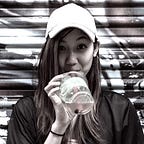The Magic Mirror
Design that Lasts Spring 22’ | Himani Auplish, Christina Ip, Max Stockdale
INTRODUCTION
Welcome to the Magic Mirror. The Magic Mirror is a re-invented “mirror” made from recycled electronic products. The mirror becomes ‘smart’ by being able to cast widgets such as weather, videos, and other information onto the digital screen while still showing your reflection. The magic mirror is not only intended to serve all the purposes of an ordinary mirror but also customizable to suit various needs.
IDEATION + CONCEPT
When our team previously explored mirrors, we studied its primary usage, intentions behind purchasing one, and the overall life cycle. As a product treated with delicate care until broken, mirrors seemed perfect until we learned there was no way to dispose of them.
Looking forward, we looked into developing a mirror for the future and considered reusing and recycling existing products as material to use — particularly electronics. We also noticed that many ordinary household items are now connected to a larger system, such as smart lamps and air conditioners. There is a large interest in creating a unified digital network or IoT that is indeed possible but comes with new generations of devices coming out yearly and a surplus of digital waste. We explored the possibility of repurposing these devices to create the Magic Mirror.
The biggest challenge we had run into with mirrors was that it was not recyclable. Glass, however, is infinitely recyclable. If we could separate mirrors from the part that wasn’t reused, then the mirror would have a long lifespan and be able to be recycled as well. By placing vinyl on top of the glass and reflecting off the digital screen, you would get a digital mirror. The last steps would be placing a frame to tie it together and a Raspberry Pi connected to a Chromecast so you could cast widgets from your smartphone.
USAGE
The Magic Mirror can be placed in various rooms such as bathrooms, bedrooms, and living rooms. It depends on what scenario serves you and what you would like it for. There also are options to choose between display sizes and the type of wooden frames to best suit your needs. Below are some mockups of how you can utilize the Magic Mirror in different scenarios and the widgets you can customize on the screen such as weather, time, daily tasks and workout plan.
SIGNIFICANCE
Our team wanted to strengthen the relationship between the action and the user by augmenting the consciousness and intention of when you look into a mirror. When using the Magic Mirror, you could turn it on or off. When the digital screen is off, it’ll still reflect an image dimly. However, when you make the decision to turn the mirror on, it is intended to reflect yourself and whatever is cast on there. Seeing your reflection becomes a deliberate and conscious act.
With Magic Mirrors, rituals requiring mirrors such as hygienic routines and workout sessions will have a stronger relationship between action and object. Though mirrors are omnipresent, the Magic Mirror’s features force users to be more conscious.
SERVICE & CONSTRUCTION
The Magic Mirror service process would source reusable material, package it and ship it off to the customer.
After purchasing, the Magic Mirror requires simple assembly. The process starts by attaching Raspberry Pi, screwing on a wing nut to hold it together, and getting it ready to be hung up.
PACKAGING / VISUAL STYLE
The mirror is highly customizable as we can ship only the materials that are not already available at the customer’s home. In addition, the frame can be offered in various levels of refinement, such as raw or finished. The user can decide how much they would like to customize the mirror.
FUTURE/END STORY
The Magic Mirror as a whole never ends, but parts such as the frame and screen can be taken apart and upgraded but the product lives on. We wanted the user to create a bond with the object and designed for opportunities to do so through the customization process and DIY assembly. Throughout this course, we learned that emotional bonds and memories can be created with inanimate objects when we cared for them and established stories. This in turn would lessen waste. Our team hope to achieve these goals through the creation of Magic Mirror.
